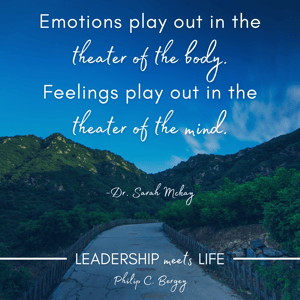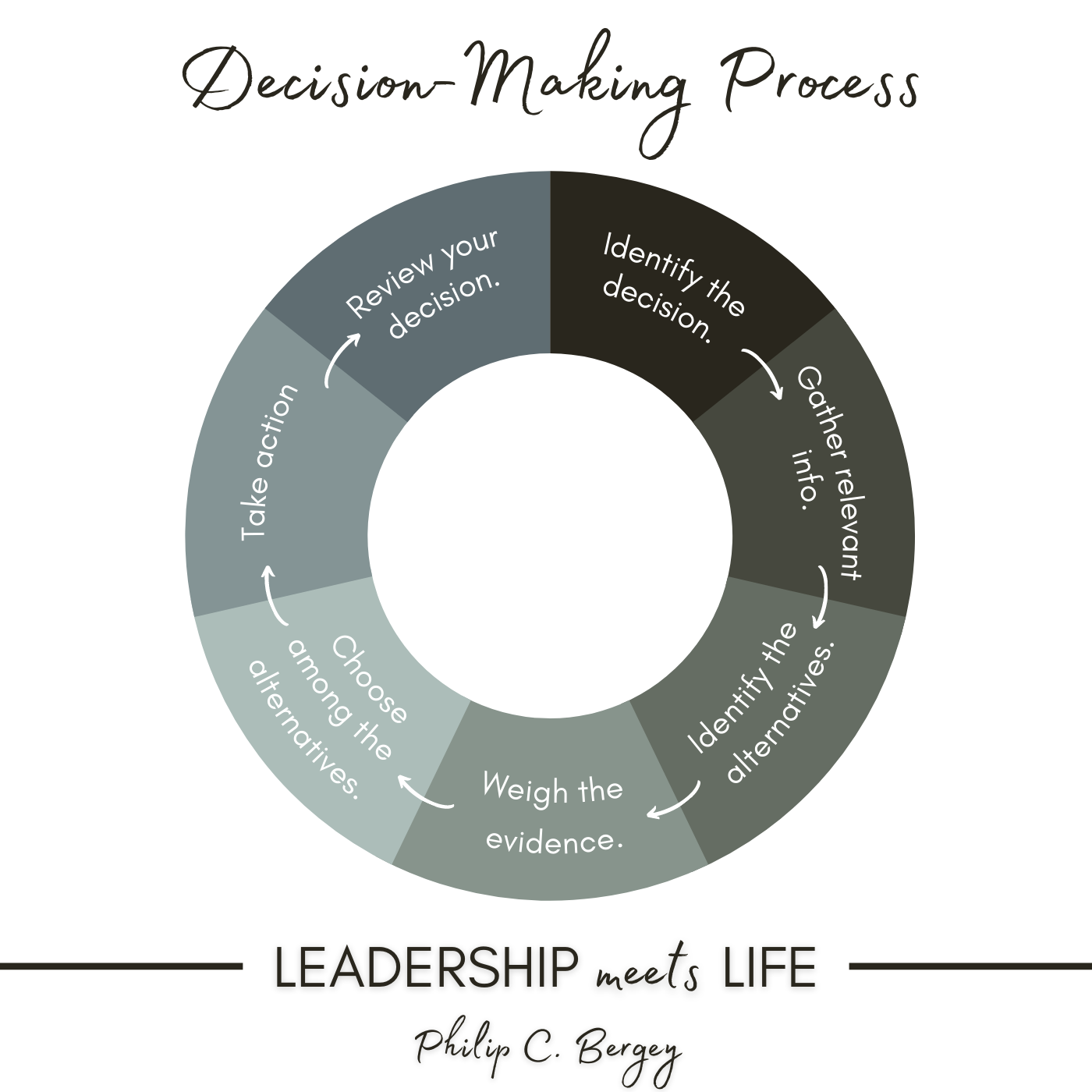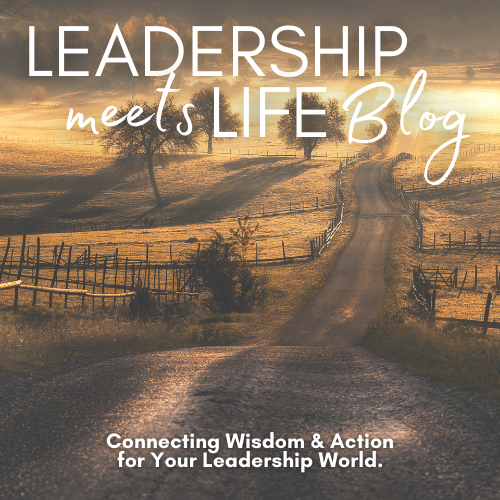
You can focus on the big picture or zoom in to view something in detail. It's one or the other, not both at the same time. That's the way the human brain works.
If you're in a coffee shop to do some work on your laptop, you can likely tune out the drone of clanking dishes and multiple conversations to focus your attention on your work. And if someone joins you, you can focus on your conversation with them despite the cacophony of voices and noises surrounding you.
To understand a bit more about how we pay attention to one thing and not another, you can check out my 20-minute podcast Episode 10: Can You Actually Multi-Task?: The Neuroscience of Attention here.
Our brain has three distinct networks:
- Central Executive Network
- Default Mode Network
- and Salience Network
The Salience Network is constantly scanning our body and any signals it's getting from inside our body or from the environment around us. It uses that scanning to decide when something is important enough for us—that is, salient enough—to switch from the Default Mode Network into the Central Executive Network.
The Default Mode Network is simply what it says: it's the default mode when we're not engaged in a task or conscious effort of any kind.
The opposite network from the Default Mode is the Central Executive Network—that leadership center activated by the Salience Network to respond to a threat, engage in a task or pursue an intentional process.
Practically speaking, we do our best listening, thinking, and problem-solving when we can remain focused in that Central Executive Network.
The best way to get out of our Default Mode Network and into action is to get out of your head and (literally) into the room, as neuroscientist Dr. Irena O'Brien says. That is, if you feel stuck, just begin. Simple baby steps help progress feel meaningful, and meaning leads to action.
The other theme highlighted in the corresponding podcast episode of Leadership Meets Life is the notion of multi-tasking. However, much of what we consider multi-tasking is actually fast task-switching since for many tasks—especially those using the same channel- we can only switch between them.
The exception is when we're using different channels, like jogging while listening to this Leadership Meets Life podcast.
When we think that our multi-tasking is so impressive, we're actually not as productive or efficient as we'd like to believe since we use more resources from our body budget during fast task-switching. As a result, we tend to make more errors or produce lower-quality work.
Some ways to improve attention are:
- Practicing mindfulness
- Healthy eating
- Exercise
- Hydration
- Classical music
- Drinking tea, chewing gum
A related theme with multi-tasking and attention is the notion of inattention blindness and selective attention. Check out the videos in the resources section below.
Emotions = Feelings?
Feelings and emotions are often used interchangeably, yet from a neuroscience perspective, there are significant differences.
Neuroscientist and author of Your Brain Health blog, Dr. Sarah Mckay, differentiates emotions and feelings this way:
Emotions play out in the theater of the body. Feelings play out in the theater of the mind.
Emotions are sometimes described as lower-level responses in the brain that create biochemical reactions in our body that alter our physical state. Their function has been to provide quick reactions to threats or rewards. And they change our physical state, so they are literally built into our genetic make-up.

So emotions are physical and instinctual, which is why body language can be so telling, and why self-awareness—including awareness of what we are experiencing in real-time, is central to higher emotional intelligence. Our emotions precede our feelings.
Feelings, then, are essentially mental associations and reactions to our emotions. As such, our feelings are subjective and influenced by our personal experiences, memories, beliefs, and mental models.
Again the words of Dr. Sarah Mckay:
Emotions play out in the theater of the body. Feelings play out in the theater of the mind.
Widely accepted emotions are:
- Happiness
- Sadness
- Fear
- Disgust
- Anger
- Surprise
Neuroscientist Antonio Damasio is a researcher who revived and provided scientific evidence for the work of early psychologist and educator William James that feelings and emotions play a key role in decision making. Damasio says:
"Feelings are mental experiences of body states, which arise as the brain interprets emotions, themselves physical states arising from the body's responses to external stimuli."
So the sequence is:
I am threatened (external stimulus)
experience fear (emotional response in my body)
and feel horror (the feeling I connect to the emotion)
Debbie Hampton notes in her blog The Best Brain Possible:
"Your emotions and feelings play a powerful role in how you experience and interact with the world because they are the driving force behind many behaviors, helpful and unhelpful. It's possible to react to emotions and the feelings they evoke, guided by unconscious fear-based perceptions that you may not buy into anymore. Yet, you're living your life, making decisions, and behaving according to these outdated tendencies. Living unaware like this almost always leads to problems and unhappiness in the long run."
Making Decisions with Our Whole Self
Recognizing the role that emotions play in our lives (literally in our body) and our choices to become aware of and examine our feelings in response to our emotions becomes vital for healthy living and successful leadership!
Realizing the importance of feelings in decision-making is a needed counterweight to the heavy Western emphasis on logic and reasoning—also vital—that too often are viewed as the only or best way to make decisions you can trust.
One of the assessments I use in my work as an executive and leadership coach is called the iEQ9 Integrative Enneagram. One of the measures it provides is the degree to which someone uses each of the three Centers of Expression: Action, Feeling, and Thinking.
We use all three of these centers of expression. However, we tend to favor one of the three first to do our initial processes. Ideally, we find ways to use all three of the centers of expression since learning to access our thinking, feeling, and action (gut or body awareness) leads to our best processing and, thus, the potential for decision-making.
You may be familiar with a software application called Lucidchart. I include it since it has a basic decision-making process and more complex processes shown here.
Lucidchart includes these steps in a typical decision-making process:
- Identify the decision.
- Gather relevant info.
- Identify the alternatives.
- Weigh the evidence.
- Choose among the alternatives.
- Take action.
- Review your decision.


- Based on my blog post, at what step(s) in the decision-making process above would you want to make sure you are aware of your emotional state? Your feelings?
- What strategies or tips have you learned to get in touch with your emotions? With what you're feeling?
- As a leader, how might you learn to read your body in real-time to scan for your body's emotions (Happiness, Sadness, Fear, Disgust, Anger, Surprise) so you can consider how a particular emotion is impacting how you're showing up, and what meaning you give to that emotion in the form of a feeling?
And remember, meditation and prayer can help us feel centered and more in touch with our bodies. Check out the Ten Percent Happier app listed in the Resources section below.

Next month my Leadership Meets Life Blog and Podcast will focus on the neuroscience of motivation and willpower. We'll look at what Dr. Irena O'Brien calls the progress principle, and of course, we'll dig into what's going on with procrastination, assuming I don't miss my deadlines!!

- Videos: Focus and Selective Attention
- Article: Selective Attention
- Article: Multicosts of Multitasking
- Phone App: Ten Percent Happier: Meditation and Sleep
- Application: Lucidchart
- Primary Source: The Neuroscience School, led by Dr. Irena O’Brien
- Book: Lisa Feldman Barrett, Seven And A Half Lessons About The Brain
- Podcast: Leadership Meets Life
Let me know how you’re connecting with the Leadership Meets Life Blog and Podcast. I’d love to hear from you! You can reach me directly at philb@designgroupintl.com or by visiting my website.
Tags:
church decision making, leadership, Neuroscience, attention, emotions, Leadership Meets Life Blog/Philip%20C.%20Bergey%20Headshot%20(300x300).png)
March 24, 2022
.png?width=100&name=Phil%20Bergey%20Headshot%20(1).png)





Comments